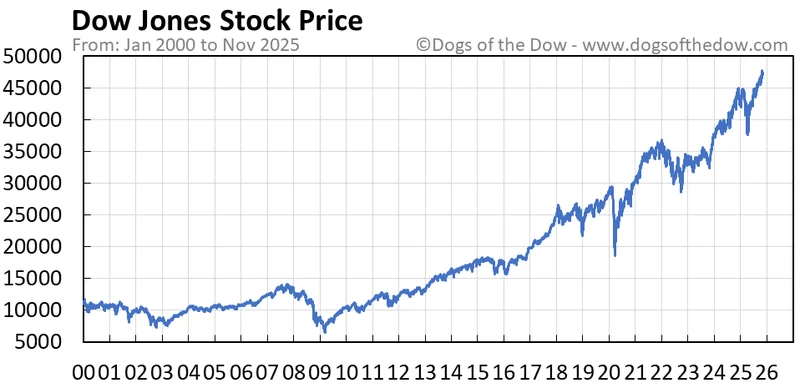Title: Wall Street's "Correction" Prediction: Translation—They're About to...
2025-11-05 11 dow jones stock markets
Tech's "Monster Run" Ends Sweaty and Gasping: A Data Dive into the Correction
The market giveth, and the market taketh away. After months of what some are calling an "unstoppable run," tech stocks are finally catching their breath—or, as Edwards Asset Management put it, "dripping with a bit of sweat and gulping for air." The Dow Jones Industrial Average closed down nearly 400 points (399 to be exact), and the Nasdaq took a bigger hit, dropping 1.9%.
This isn't exactly a black swan event. The signs have been there, flickering like a dodgy fluorescent bulb. Even Jamie Dimon, not exactly known for his bearish pronouncements, noted the "turbulence" and uncertainty.
The question, of course, is what's behind this wobble, and whether it's a temporary dip or the start of something nastier. The usual suspects are being rounded up: concerns about "expensive tech stocks," "elevated valuations," and, of course, that perennial favorite, the "bubble."
But let's dig a little deeper than the headlines.
Chipmaker Advanced Micro Devices (AMD) took a 7.27% hit. Palantir (PLTR) fell 6.84%. Nvidia (NVDA), the darling of the AI boom, dropped 3.65%. These aren't just random fluctuations; they're indicators of a broader shift in sentiment.
Wall Street's fear gauge, the VIX, jumped 9%. CNN's Fear and Greed index is hovering between "extreme fear" and "fear." Okay, so people are nervous. But why are they nervous?
One clue lies in the bond market. Investors are rushing into government bonds, pushing yields lower. This is a classic "risk-off" move, driven by concerns about a slowing economy. The data on layoff announcements isn't exactly comforting, either. The number of announced job cuts in October was the highest increase for that month since 2003. (The emphasis is mine, because seasonal adjustments matter.)

Here's the chain reaction: Weakening labor market -> expectations of Federal Reserve rate cuts -> investors buying Treasuries to lock in current yields. Ulrike Hoffmann-Burchardi at UBS Global Wealth Management calls it an "appealing combination of income and the potential to perform well in the event of slowing economic activity and further rate cuts."
In other words, the smart money is betting that the party's over, or at least winding down.
But I think there's a more fundamental issue at play here, one that's been bubbling under the surface for months: valuations. As Torsten Slok at Apollo Global Management points out, "The S&P 500 today is at historically extreme valuations."
And he's not wrong. Warren Buffett's favorite market indicator, which compares the total value of the US stock market to the value of US economic growth, is at a record high above 217%. That's not just overvalued; it's stratospheric. It’s like a building with foundations made of balsa wood.
Of course, valuations are always a matter of debate. Some argue that current levels are justified by strong corporate earnings and the transformative potential of AI. But there's a growing sense that the market's gains are too reliant on a handful of tech companies. And that Wall Street's bar for positive surprises is rising so high that companies are getting punished even for beating expectations. Duolingo (DUOL), the language learning company, plunged 25.49% on Thursday after its outlook and guidance underwhelmed investors, despite reporting decent numbers.
And this is the part of the report that I find genuinely puzzling. The market seems to be in a state where good news isn't good enough. Which suggests that something deeper is going on.
What's that "something deeper"? Well, it could be a loss of faith in the long-term growth narrative. It could be a realization that AI, for all its promise, is still years away from delivering on its hype. Or it could simply be that investors are finally waking up to the fact that asset prices can't keep rising forever.
Or maybe, just maybe, the market is starting to realize that those "extreme valuations" are based on some fairly optimistic assumptions about the future. I mean, Bitcoin slid almost 3% and is down roughly 20% from its all-time high. That's not exactly a sign of unbridled confidence.
After a monster run, a correction was inevitable. The question now is whether this is just a healthy pullback or the start of something more significant. The data suggests that the market's fundamentals are shaky. And that the "extreme valuations" are based on hope rather than hard numbers. It isn't about "if" but rather "when.
Tags: dow jones stock markets
Related Articles

Title: Wall Street's "Correction" Prediction: Translation—They're About to...
2025-11-05 11 dow jones stock markets